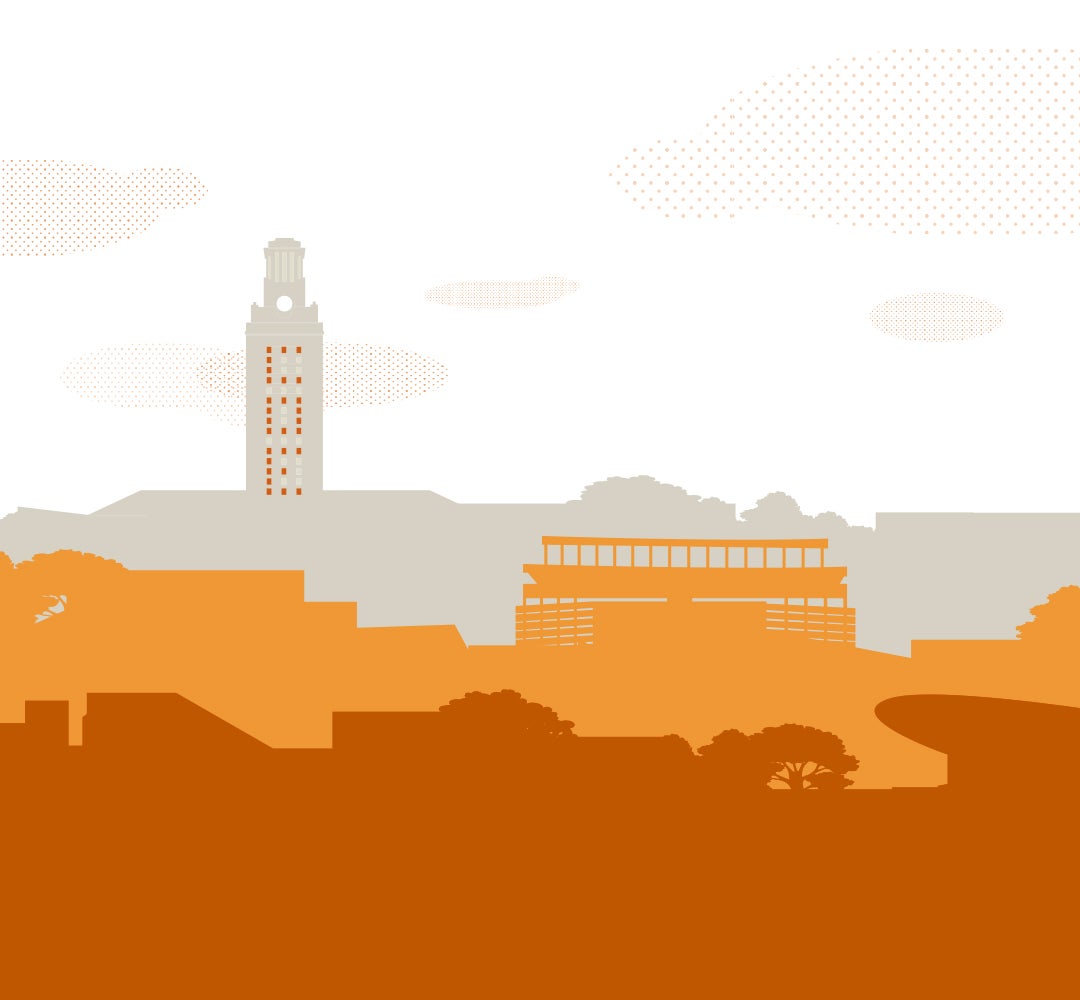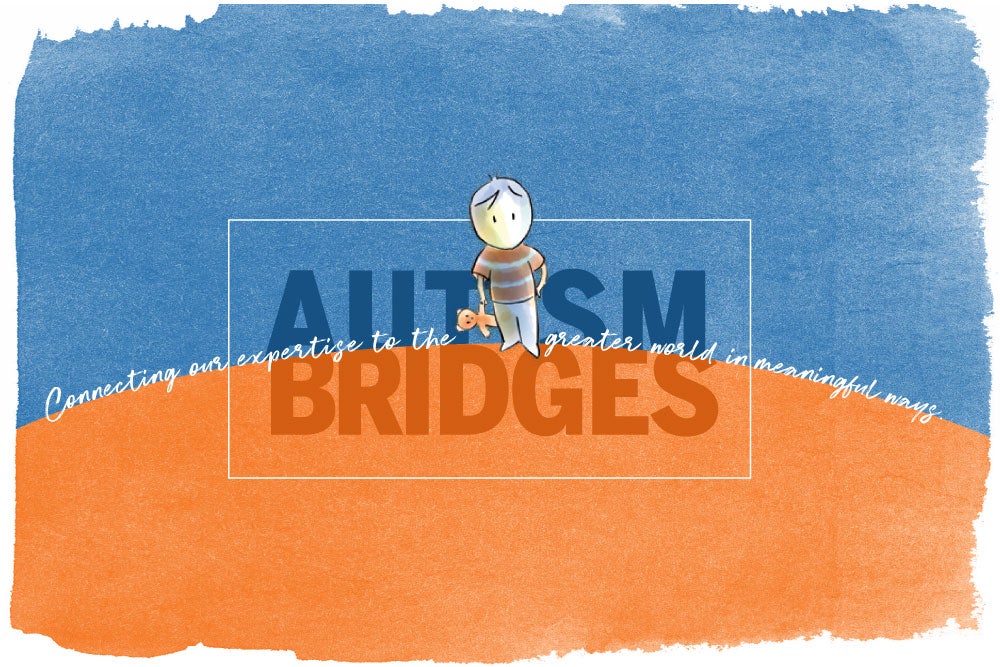
The goal of the Department of Special Education is to be a bridge of expertise for families of children with autism, and for the community. We provide a space for our faculty to conduct basic and applied research. We also prepare our students to create and deliver best practices in a variety of environments: the home, community settings, and as researchers at other institutions. — Mark O’Reilly, Chair, Department of Special Education
Basic Research
Baby Talk
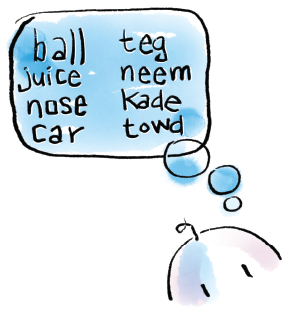
In her Brain and Language Lab, Sandbank and her team use electroencephalography—or EEG— to study the way young children process words. Specifically, they are studying event-related potentials—brain responses that are the result of sensory, cognitive, or motor events.
It’s the first such lab in a college of education in the U.S. that studies brain activity in children as young as 12 months. The children sit on a parent’s lap while 64 sensors are placed on their head using something resembling a hair net. As researchers read real and non-real words, they record children’s brain responses.
What is Autism?
Autism Spectrum Disorder (ASD), describes a set of behaviors associated with specific differences in how the brain perceives and processes environmental input.
1 in 68
children have been identified with ASD.
Boys: 1 in 42 | Girls: 1 in 189
It’s around 4.5 times more common among boys than girls.
44%
of children with ASD have average to above-average intellectual ability.
Source: Centers for Disease Control’s Autism and Developmental Disabilities Monitoring Network
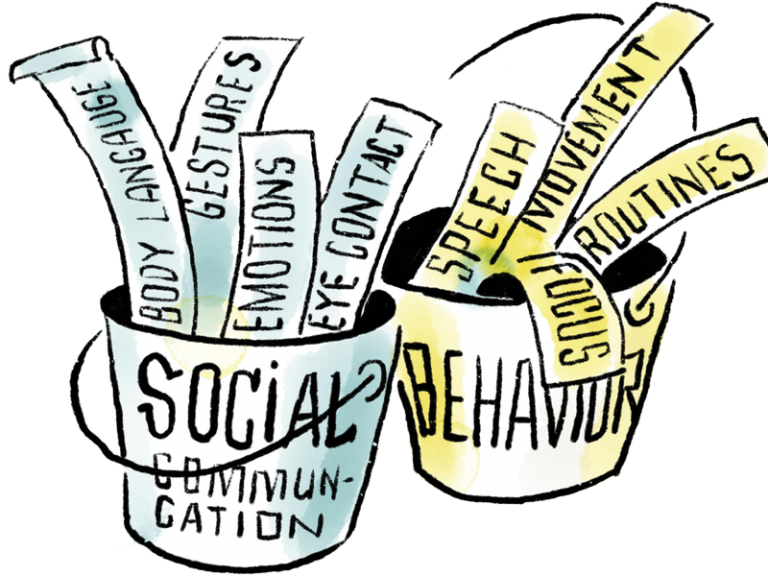
Autism Spectrum Disorder is diagnosed by looking at criteria in two categories: Social Communication and Behavior.
What are the major transitions in the life of someone with autism?
1. Diagnosis (Typically age 2-4)
Research has shown that most children are diagnosed with ASD around age 4, though a diagnosis of autism at age 2 can be reliable, valid, and stable.
2. Transition to Schooling (typically age 5-6)
Parents and guardians begin to navigate the school system.
3. Transition to postsecondary life (typically age 18-22)
Early interventions, public awareness, and K-12 support have increased educational opportunities for children with autism. But what are the options for life after high school?

Applied Research
Bluebonnet Trails
The Department of Special Education collaborates with Bluebonnet Trails Community Services in Georgetown. This collaboration allows doctoral and master’s students to provide family-centered applied behavior analysis (ABA) in home and community settings for children between the ages of 3 and 15 who have a diagnosis of autism and live in Williamson, Travis, and surrounding counties.
Programs are embedded into daily routines. Graduate students may accompany a family to the grocery store to work on making a successful shopping trip, or to the library to follow rules in the community related to staying with a parent.
This collaboration offers families interventions that reduce challenging behaviors and increase and improve communication, daily living skills, and abilities related to health and safety. They also increase social opportunities that children and young teens have through their relationships at home and in the community.
The result is long-lasting change. Parents learn to implement strategies rooted in behavioral principles that are supported by applied research in the field of autism, behavior analysis, and special education.
“Families get immediate solutions to challenging behaviors that may be occurring throughout the day. Our children learn skills and behaviors that support higher learning at home, in the community, and at school.”
– Suzy Albarran, BCBA Second-year doctoral student, Field Supervisor, Bluebonnet Trails
“Everyone I worked with helped my family so much. My child is now able to take care of his basic needs without my help because of their guidance and interventions.”
– Noemi, mother of child with Autism
Next-generation Research
Special Education graduates are leading research at major universities across the country, including:
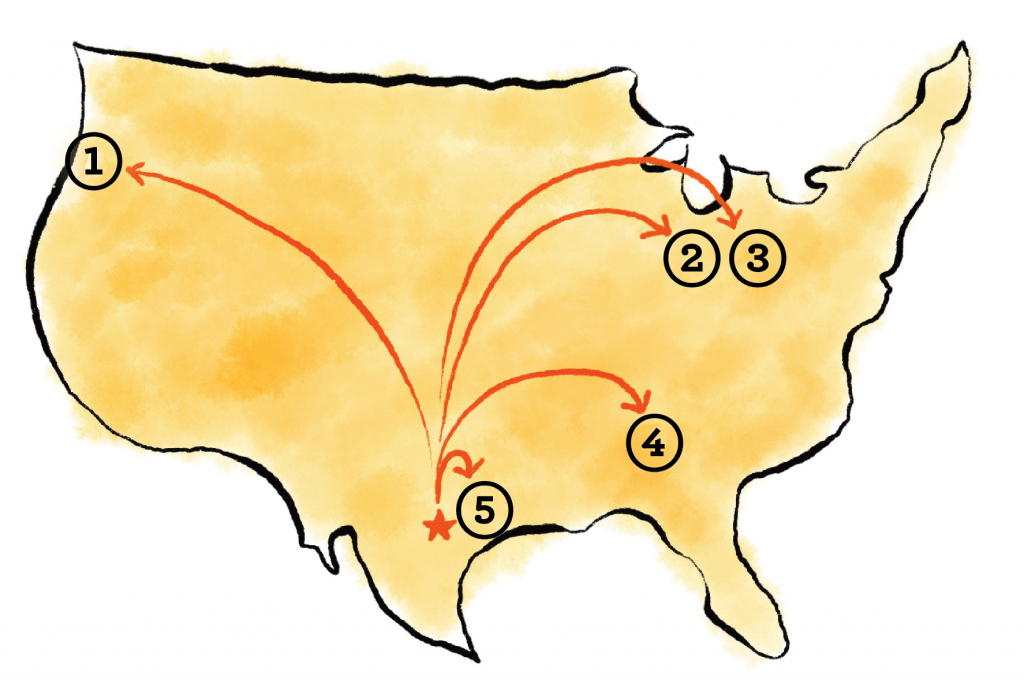
- Wendy Machalicek, M.Ed, ’04, Ph.D., ’08, University of Oregon—Effective behavior analytic assessment practices and interventions addressing the behavioral and educational needs of young children with ASD and other developmental disabilities.
- Mandy Rispoli, M.Ed. ’04, Ph.D. ’09, Purdue— Functional behavior assessment and function-based intervention for challenging behavior in children with ASD and developmental disabilities
- Helen Malone, Ph.D. ’05, Ohio State University— Teaching new skills to individuals with severe to profound disabilities and assessment/ treatment of challenging behaviors
- Colin Muething, Ph.D. ’16, Emory University— Novel treatments for severe problem behavior, the mechanisms that mediate their effectiveness and reporting large outcomes from these treatments
- Tonya Davis, Ph.D. ’08, Baylor University— Treatment of severe challenging behavior among individuals with intellectual and developmental disabilities
Beyond Autism
Faculty in the Department of Special Education and its associated centers provide research across the spectrum of learning and behavioral disorders—focused on topics like intensive math and reading interventions, design, and evaluation of assistive technology, supporting bilingual students, and the transition to post-school employment for people with disabilities.
Research on learning and behavioral disorders is a growing need. In 2014–15, 13 percent of all public school students—ages 3–21—received services for learning disabilities and/or behavior disorders. Learning disabilities in particular are the most prevalent; children with learning disabilities represent more than one-third of all school-age students with disabilities.

